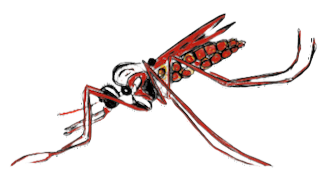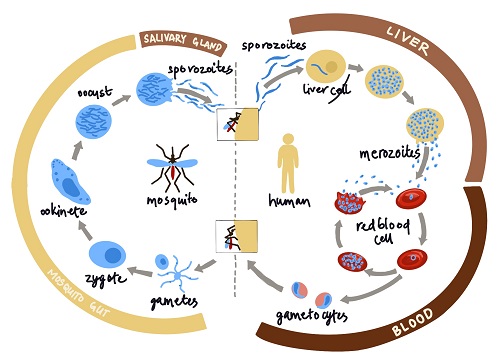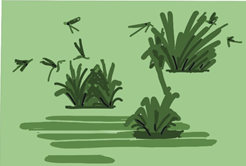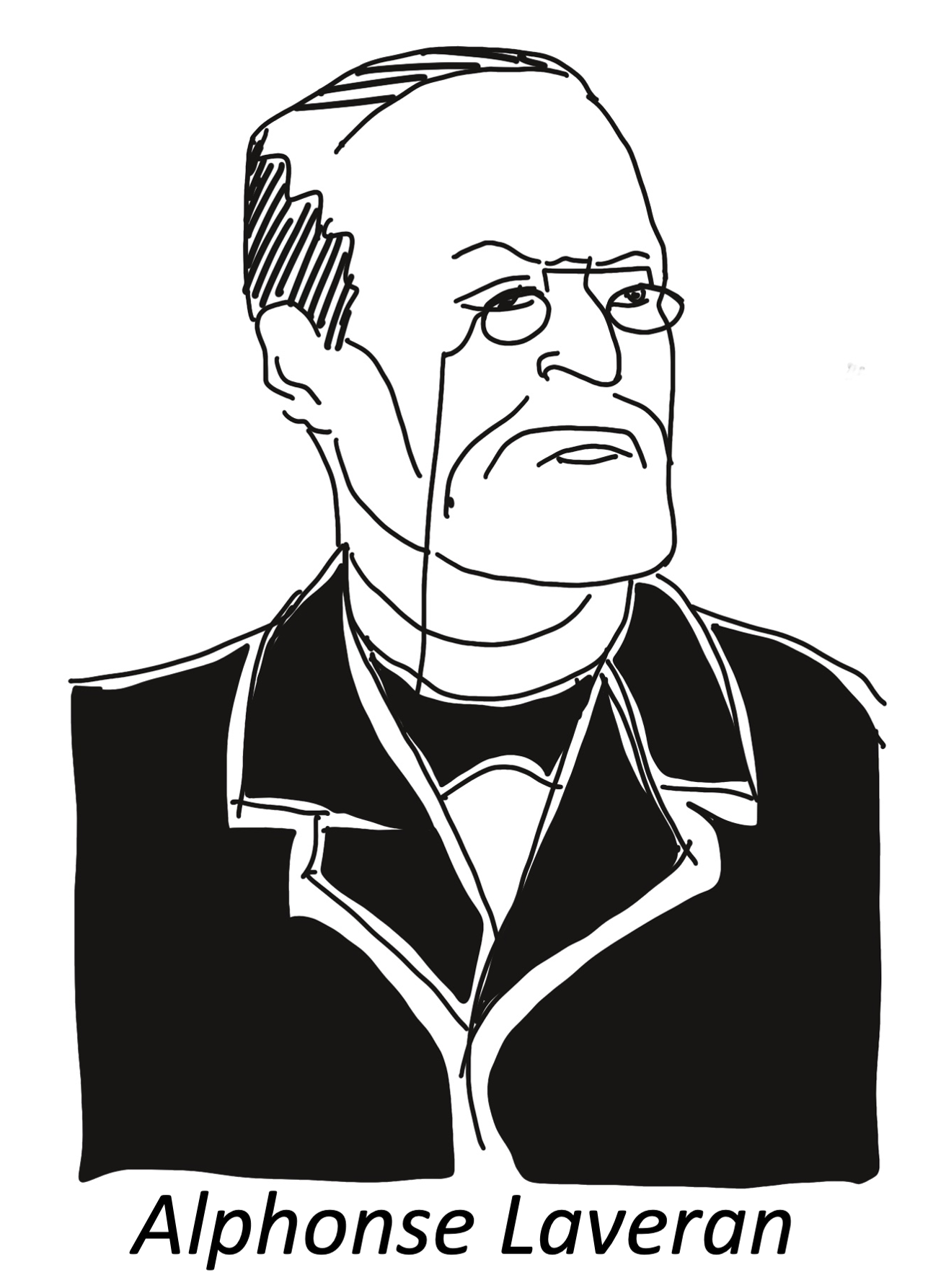What is malaria?
Malaria is a disease caused by a unicellular parasite called Plasmodium that lives in red blood cells. Humans get infected through the bite of an infected female anopheline mosquito.
There are many different Plasmodium species, but only five of these cause disease in humans: P. falciparum, P. vivax, P. ovale, P. malariae, and P. knowlesi.
The parasites multiply first in the liver, then in the blood stream. If the infection is not stopped by the immune system or antimalarial drugs, it will cause a febrile illness with headaches, fatigue, muscle aches, and vomiting.
If left untreated, P. falciparum can cause severe malaria, where large numbers of infected red blood cells block the small vessels of vital organs. This can result in coma, seizures, acidic blood, failure of kidneys or other organs, or even death.
 |
|
P. falciparum is responsible for more than 90% of all malaria deaths worldwide. |
 |
|
This is the Life Cycle of P. falciparum malaria |
Not all plasmodium species have the same lifecycle.
The lifecycle of P. vivax and P. ovale have the additional complexity of dormant liver forms or hypnozoites which do not divide immediately but remain dormant for a period ranging from three weeks to a year or longer before reproduction begins, causing relapse infections.
History of Malaria
 |
Mentions of malaria can be found in Indian, Chinese, Egyptian and Greek scripts as early as 3200 BC. For over 2500 years the idea that malaria fevers were caused by miasmas rising from swamps persisted and it is widely held that the word malaria comes from medieval Italian “mal’aria”, meaning spoiled air. Likewise, French word “paludisme” comes from the Latin word “palus,” which translates to the “sickness related to swamps”. The Greek word for this illness, “elonosia,” also means “the sickness from swamps”. |
 |
 |
In 1880, Alphonse Laveran identified the parasite seen under the microscope as the cause of malaria. In 1897, while dissecting the stomach tissue of an anopheline mosquito that had fed four days earlier on a malarious patient, Ronald Ross found the malaria parasite and proved the role of Anopheles mosquitoes in transmitting malaria parasites to humans. By July 1898, he had demonstrated that mosquitoes could serve as intermediate hosts for bird malaria.
For centuries, malaria has been treated with an extract from the bark of the Chinchona tree found in South America. |
 |
